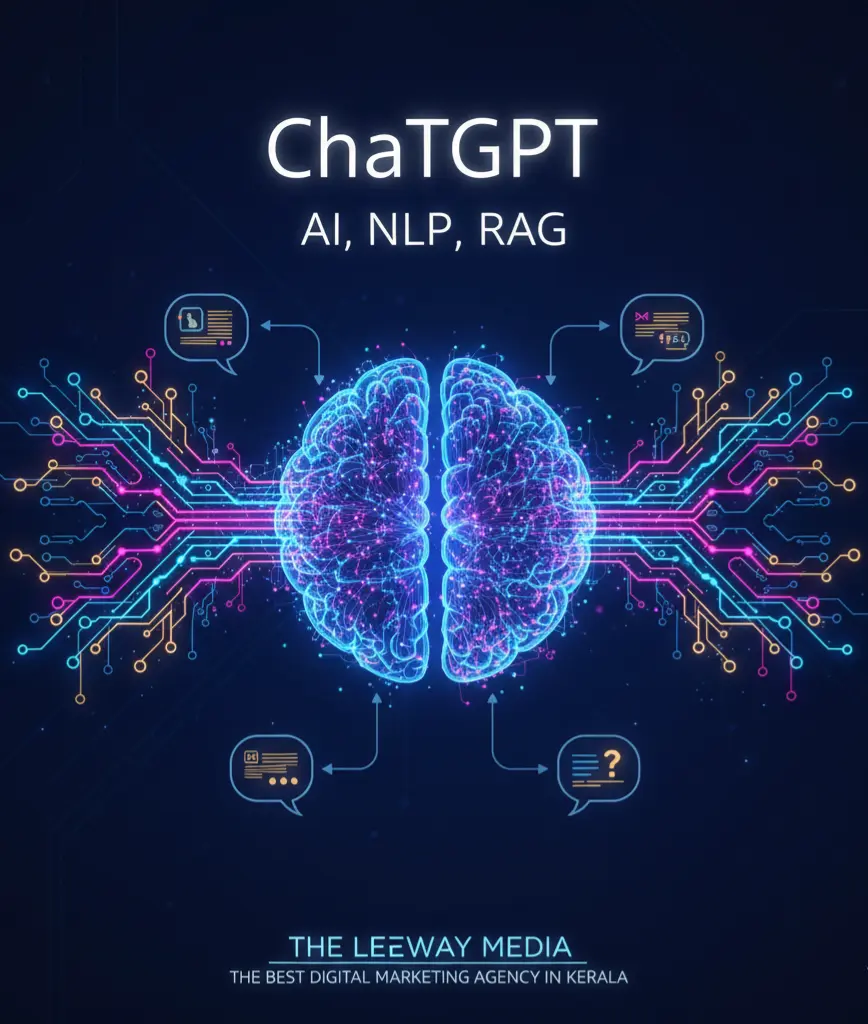How ChatGPT Works
What is ChatGPT? ChatGPT is a cutting-edge artificial intelligence language model developed by OpenAI. It is intended to understand natural language input and produce human-like, coherent, and contextually relevant text in response. Unlike conventional code that adheres to strict regulations, ChatGPT uses advanced machine learning algorithms, especially the GPT (Generative Pre-trained Transformer) architecture, to assess and determine text patterns. This enables ChatGPT to engage in interactive, conversational exchanges with users, allowing it to answer questions, provide explanations, make suggestions, generate creative content, summarise information, and assist with a variety of professional, educational, and personal activities. Writing assistance, coding help, teaching, idea generation, language translation, and customer support automation are just a few of its many uses. ChatGPT is trained on large datasets of text from books, journals, and websites, allowing it to recognize context, nuance, and intent in communication. While it excels at creating educational and innovative suggestions, it does not possess consciousness, emotions, or personal experiences, and its expertise is restricted to the data it was educated on and updates that are available through associated sources. Essentially, ChatGPT is a highly intelligent virtual assistant that can comprehend intricate questions and provide human-like solutions, making it an effective tool for productivity, creativity, and learning. What is GPT? GPT (Generative Pre-trained Transformer) is an advanced artificial intelligence language model created by OpenAI that can generate text in a natural, human-like manner. The word “generative” emphasizes its capacity to produce unique material rather than merely analyzing preexisting language. “Pre-trained” means that the model has already learnt patterns, syntax, facts, and contextual relationships from a large amount of textual data before being fine-tuned for a specific application. The “Transformer” architecture it employs allows GPT to comprehend the context and links between words, even throughout long sentences and complex paragraphs, allowing it to generate logical and contextually accurate responses. Uses of ChatGPT ChatGPT’s ability to understand and generate human-like writing makes it useful in a variety of settings, including personal, professional, and instructional. Here is a thorough overview: Content Creation Writing blogs, articles, or social media posts Crafting advertisements, taglines, or marketing copy Generating creative stories, poems, or scripts Education & Learning Tutoring in subjects like math, science, or language Explaining complex concepts in simple terms Assisting with homework, research, and exam preparation Language learning and translation Professional & Business Support Drafting emails, reports, and business documents Generating proposals, presentations, and meeting notes Automating customer support with chatbot responses Brainstorming ideas for business strategies or campaigns Programming & Technical Assistance Writing and debugging code Explaining programming concepts Providing solutions to technical problems Creating scripts or automation tasks Personal Productivity Planning schedules, to-do lists, and reminders Offering lifestyle advice (e.g., fitness, diet, mental wellness) Summarizing long texts, articles, or documents Generating creative ideas for hobbies or projects Entertainment & Creativity Brainstorming ideas for games, apps, or creative projects How ChatGPT Work ChatGPT uses artificial intelligence to comprehend the language you type and provide an appropriate, human-like answer. It does not “think” like a person, but it has been trained to recognize linguistic patterns and forecast what words or thoughts will come next. Step-by-Step Process Training on Text Data ChatGPT is trained using vast volumes of text from websites, books, and journals. During training, it acquires grammar, vocabulary, facts, tone, and context. This procedure aids in understanding how individuals communicate organically. Understanding the Input ChatGPT divides your sentence into smaller units known as tokens (words or word fragments) as you type. It examines these tokens to determine context, meaning, and intent. It can tell if you’re asking a question, giving an order, or striking up a conversation, for instance. Generating a Response Using a neural network called a Transformer, ChatGPT determines the most likely next word in a sentence, one token at a time, based on all the text it has seen before. It quickly repeats this procedure to create whole, cohesive sentences. The outcome is a spontaneous, naturally occurring response that is suited for the context. Refinement & Safety ChatGPT’s responses are refined using reinforcement learning and human feedback to make them: More accurate and relevant Safer and aligned with ethical guidelines Better at following instructions What is RAG (Retrieval-Augmented Generation) RAG (Retrieval-Augmented Generation) is an advanced AI method that creates more fact-based, accurate, and current responses by fusing text generation and information retrieval. It makes it possible for big language models, like GPT, to consult outside knowledge sources when producing text, like as databases, documents, or the internet. RAG enables the model to access pertinent, real-world data and produce responses based on actual data, rather than only the knowledge acquired during training. This method closes the gap between stored information and up-to-date, factual content while improving the model’s accuracy, dependability, and relevance. How RAG Works? Retrieval Step: When you ask a question, the system initially searches an external knowledge base (such as a document set or web index) to find the most relevant answers. Generation Step: The gathered data is subsequently passed to a language model (such as GPT), which uses it to construct a meaningful, context-aware response. Benefits of RAG Up-to-date information Higher factual accuracy Better transparency (sources can be cited) Adaptable to custom databases (like company documents or academic papers) What is RLHF RLHF is an abbreviation for Reinforcement Learning from Human Feedback, which is a strategy for training AI models (such as ChatGPT) to make their responses more helpful, accurate, and consistent with human values. The model learns from human preferences and feedback in addition to text input to enhance the accuracy and security of its responses. How RLHF Works Pre-training: The model (like GPT) is trained on vast amounts of general text (books, papers, and webpages) to understand linguistic patterns. Fine-tuning with Human Feedback: After reviewing several model responses to the same query, human trainers assign a ranking from best to worst. This aids the AI in determining what constitutes a factual, polite, and useful response. Reinforcement Learning: Using these rankings, the model gains experience with

